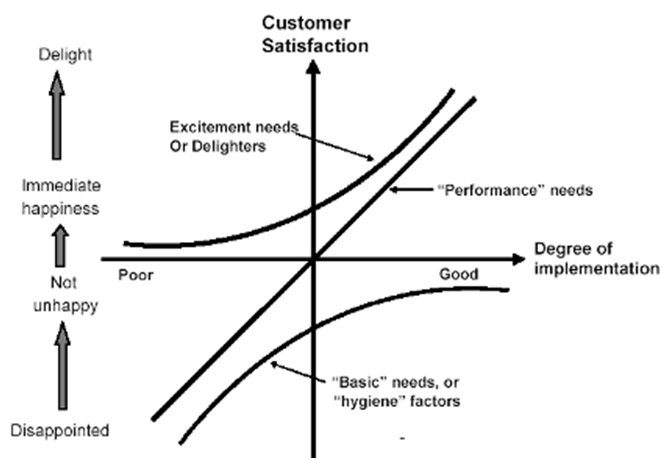
The clear advantages of free market economy above centrally planned economy were confirmed with the fall of USSR in 1991. However, free market economies have differences in their variations as well, the main of which are liberal market economy and coordinated market economy. The fundamental differences between liberal and coordinated market economies can be summarised in a way that in liberal market economies hierarchies and competitive market arrangements coordinate the activities of businesses, whereas coordinated market economies mainly focus on non-market relationships in terms of coordination of their activities (Vestergaard, 2009). NewAge-Bio is a biotechnology company that is considering opening a research and development centre abroad and has to choose between the USA, a country with liberal market economy, and Germany a classical coordinated market economy. This article represents a report for NewAge-Bio CEO Mr Mark Phillips and gives advices backed by research and justifications regarding the choice of the country to open a research and development centre. The article starts with general discussions about advantages and disadvantages of liberal and coordinated market economies in cases of USA and Germany and proceeds to focusing on five main aspects of the issue: industrial relations, employee relations, education and training, inter-company relations, corporate governance and financial markets. Moreover, a personal letter is also included to NewAge-Bio CEO Mr Mark Phillips that gives specific recommendations regarding the choice of the country, providing detailed justifications for each of the points being recommended. Advantages and Disadvantages of Liberal and Coordinated Market Economies for Opening NewAge-Bio Research and Development Centre: USA or Germany? Liberal and coordinated market economies are the two forms of free market economies that have specific differences which would have direct impact on various aspects of practice of NewAge-Bio Research and Development Centre. The basis for the distinction between liberal and coordinated market…

Globalisation along with other factors like technological advancement and increasing role of internet has changed the ways businesses are conducted dramatically and irreversibly. Nowadays, any company with an innovative product or service, right price and effective marketing strategy has an opportunity to lead its market globally employing hundreds of thousands employees and generating annual revenues to be counted in tens of billions of pounds. This is possible because today “no country or group can shut itself off from others” (Beck, 2000, p.10) in terms of their economic activities in general, and export to the country in particular. However, implementing the same approach in various markets in terms of pricing, marketing, packaging and other aspects of the product may not work well due to cultural and other differences associated with each particular market. This article is a critical analysis of the approach of “Think Globally, Act Locally” and analyses the need for multinational companies to adapt to the characteristics of each individual market they are operating in. The paper starts with the discussion regarding the importance of the approach “Think Globally, Act Locally” followed by the analyses of application of this concept by some of the famous multinational companies. Then, difficulties associated with the need for multinational businesses to adapt to local markets are explained in great detail referring to the works of international businesses researchers and practitioners. Lastly, recommendations are also provided within the paper regarding how multinational companies already operating in multiple markets, as well as companies trading locally, but with the expansions plans on a global level can achieve successful operations across borders and continents through to their local markets, thus effectively attracting local customers. The Importance of “Think Globally, Act Locally” Approach The primary reasons of globalisation have to be reminded briefly in order to explore…
By John Dudovskiy
Category: International Business

Rai (2008) states that when companies are analysing customer expectations in service sector, the following issues need to be studied and addressed by company management: Firstly, analysing what customers expect from the services. Following this specific advice can prove extremely helpful due to the fact that sometimes service companies commit to considerable investments aiming to improve customer satisfaction spending money on some aspect of the service that customers do not value, at the same time failing to recognise the issues that are causing customer dissatisfaction. Secondly, analysing factors influencing on the formation of customer expectations. Once these factors are learned it will be much easier for service companies to undertake strategies aimed at improving customer satisfaction. Thirdly, analysing the ways of changing customer expectations. Learning how to manipulate with customer expectations will give service companies tremendous advantages in forming customer expectations in a way that is easier for the company to exceed these expectations. Fourthly, service companies should devise efficient strategies that are aimed at exceeding customer expectations. Once all the above specified measures are implemented exceeding customer expectations would not prove to be extremely challenging. Rai (2008) discusses following five dimensions that form basic ‘skeleton’ of corporate relationship management of a service company: First, tangibles associated with a service. Although the main difference of services from products is that services are intangible, still ‘tangibles’ associated with services such as decoration, design of the premises, the quality of seating, cleanness of place etc. do play an important role on customer satisfaction. Second, offers associated with services. This relates to the level of attractiveness of service offers made from the financial points of view. Third, the delivery of the service. Regardless of type of the service the level of its delivery is going to affect customer satisfaction. Therefore, some service companies…

International convention, exhibition and meeting industry has increased in size and importance recently due to several reasons. Firstly, globalisation has decreased the importance of the traditional meaning of borders between countries and as a result today businesses and people move to other countries to attend or to organise various types of special events. Secondly, intensive technological advancements of the last several decades have contributed to the number of special events through offering new business ideas that needed to be discussed and presented to public. Thirdly, the increasing role of internet in many aspects of human and organisational life has assisted information about special events to circulate more widely, and accordingly positively contributed to the number of attendance to special events. It has been stated that “a global meeting, convention, or exhibition forms a temporal community. This temporary society has all the challenges and opportunities of more permanent societies” (Krugman and Wright, 2007, p.2). Therefore, the topic needs to be approached with the due importance and various aspects of the issue needs to be analysed in order to be able eliminate these challenges. This article critically analyses the current state of special events industry in a global perspective focusing on international, conventions, exhibitions and meetings. The article explores the issues of the size, nature and range of international convention, exhibition, and meeting industry, analyses the factors of success of special events, and describes the main skills that are required in conference, exhibition and meeting industry. The article also includes the assessment of the importance of destination marketing in conference, exhibition and meeting industry. Size, Value, Nature and Range of International Convention, Exhibition and Meeting Industry The scope of the meetings and events industry in a global level is difficult to quantify due to the fact that there is no a single source…
By John Dudovskiy
Category: Industry Analysis

The definition of food tourism is straightforward and there is no dramatic contrast among various definitions offered by various authors. A typical definition of food tourism would is like a “visitiation to primary and secondary food producers, food festivals, restaurants and specific locations for which food tasting and/or experiencing the attributes of specialist food production regions are the primary motivating factors for travel” (Buhalis and Costa, 2006, p.137). To make it more simple, it can be stated that food tourism is travelling to other destinations in order to consume their food. First of all, there is a consensus among the vast majority of authors the works of whom have been studied as a part of literature review that the topic of food tourism is not new. At the same time, “yet it is such an integral part of the experience that it is only in recent years that it has become a subject of study on its own right” (Hall and Sharples, 2003, p.1). Gretzel et al (2010) link this recent rise of popularity of food tourism to technological advancement in general, and the increasing role of internet in particular, by stating that once it became easier for people to get information of various types from internet including culinary and cuisine of other nations, more and more people started to travel to other countries for the sake of trying their food. Moreover, some authors have offered explanations about the growth of food tourism by stating the importance of the tourism destination. Specifically, it has been stated that “as the motivation to experience food and while travelling growth, destinations with appropriate levels of food and wine resources are able to develop increasingly sophisticated food and wine experiences, which may lead to the emergence of gourmet tourism” (Chen, 2009, p.165) Among a…

Factors Affecting Customer Satisfaction: case study of London Underground and National Rail Services
There are many factors that affect the level of satisfaction of both product and service customers equally, and some of these factors have been discussed in detail earlier. However, there are also some factors that affect the level of satisfaction of service customers alone, and not necessarily customers satisfaction levels of people buying products. The most common factors proposed by authors that effect the customer satisfaction levels of service customers can be summarized into following points: First, non-verbal behaviour of service provider greatly affects the level of customer satisfaction of service customers (Gabbot, 2000). Due to the fact that most of the services are provided by people, service customers are more sensitive and critical towards behaviour, including nonverbal behaviour of people offering these services. However, this statement is less relevant to services provided by London Underground and National Rail Services, due to the fact that although they operate in service sector, nevertheless, human aspect of their operations that has a direct contact with customers are less intensive compared to many other types of services like teaching and hairdressing. Second, in service sector the quality of service and customer satisfaction level may depend on the competency of a single employee (Barnard, 2000) In cases of London Underground and National Rail Services this statement is especially true which can be illustrated by the role of train operators in cases of trains being held between two stations. London Underground and National Rail Services trains being held between two stations for signal failures and other occasions are not rare occurrences. However, some train operators positively contribute to the level of customer satisfaction by repeatedly apologizing and explaining the reasons of delays, while others damage the customer satisfaction level even more by keeping customers ‘in dark’ in such an unpleasant circumstances. Third, customers’ own involvement…
By John Dudovskiy
Category: Customer Services

Factors Influencing Customer Expectations Factors that influence the level of customer expectations have been specified by Rai (2008) as the following: Firstly, benchmarks specified by service competitors. Competitors’ service benchmark influence customer expectations in a way that the higher the benchmarks, the higher customer expectations will be. Secondly, individual psychology. As it has been discussed above the role of individual differences find greater reflection in the level of customer satisfaction in the service sector compared to the level of customer satisfaction in products. Therefore, most of the service companies strive to adopt individual approach taking into account expectations and characteristics of each individual customer (Barnard, 2002) Thirdly, individual background. As it has been identified that individual psychology plays a great role on the service expectations from that individual; individual background as one of the main determinants of individual psychology also plays an important role in customer service expectations. Fourthly, previous service records of the company. When potential consumers approach a service company they will have their expectations according to various characteristics of the company, including its previous service records. Accordingly consumer expectations will be high in companies with reputable service records, and vice-versa. Issues in Customer Expectations As it has been well established in business world, one of the important conditions of ensuring long-time profitability of the business is meeting or exceeding customer expectations at all times. However, even with the willingness of the company to exceed customer expectations and with relevant skills and capabilities achieving this objective can prove to be challenging due to the following reasons specified by Rai (2008): Firstly, customer expectations may be unrealistic. The issue of customer expectations being unrealistic have been raised by several authors including Miller (1995), James (2004), and Hayes (2008). The common practice for service companies in such a scenario…
By John Dudovskiy
Category: Customer Services

Service Quality Model pioneered by Gronroos (1982) states that customer’s perception of quality, and ultimately customer satisfaction depends on customer’s perception of two dimensions of the service: technical quality and functional quality. Technical quality dimension of the service concentrates on what the customer receives, focusing on the technical outcome of the process. Functional quality, on the other hand, concentrates on how the consumer receives the technical outcome. A service concept is explained by Johnston and Calrk (2008, p.42), as a shared understanding of the service nature provided and received, which should encapsulate information about: – The organizing idea, which is the essence – The experience. – The outcome. Lancaster et al (2002, p. 75) inform that consumer buyer behaviour is influenced by a range of environmental and individual factors. Environmental influencers include cultural, social class, groups/family, situational factors and marketing efforts, and individual influencers include psychological aspects, lifestyle, demographics and economic situation. References Johnson, R & Clark, G, 2008, “Service Operations Management”, third edition, Prentice Hall Lancaster, G, Massingham, L & Ashford, R, 2002, “Essentials of Marketing”, fourth edition, McGraw-Hill
By John Dudovskiy
Category: Customer Services

Kano model of Customer Satisfaction was proposed by Kano et al (1996) and it focuses on product attributes on the basis of how they are perceived by customers and their effect on customer satisfaction. The model distinguishes three types of product attributes that contribute to customer satisfaction in varying degrees: basic attributes, performance or spoken attributes, or surprise or delight attributes. Kano model of customer satisfaction is not only valid for manufacturing businesses; rather it also equally can be applied to the service sector, including London Underground and National Rail Services. The basic or expected attributes for London Underground and National Rail services would be to ensure the commute of their customers from one destination to the other. Customers would be highly disappointed when the basic attributes of their services are not ensured, let alone the extremely low level of their satisfaction level if such a situation were to occur. Performance or spoken attributes of services of London Underground and National Rail Services would be the speed at which customers are taken, to their destination, the level of crowdedness inside the carriages, on platforms and stations in general, the level of customer services customers are offered by staff, and others. The level of performance or spoken attributes of services offered by London Underground and National Rail Services make a huge difference on the customer satisfaction, in a way that the better the performance, the higher customer satisfaction level will be. Surprise and delight attributes, are the ones that are not generally expected by customers, but if they are present they will make a significant contribution on the level of customer satisfaction. However, the absence of surprise and delight attributes would not dissatisfy customers due to the fact that customers would not be expecting them in the first place. For instance,…
By John Dudovskiy
Category: Customer Services

Johnson and Clark (2008) define service concept as a shared understanding of the service nature provided and received. They also state that service concept has to provide information about the essence of the service, service experience, and service outcome. “The terms customer satisfaction and perception of quality are labels we use to summarize a set of observable actions related to the product or service” (Hayes, 2008, p.33) The most comprehensive definition of satisfaction has been offered by Kotler and Keller who define satisfaction as “person’s feeling of pleasure or disappointment which resulted from comparing a product’s perceived performance or outcome against his/ her expectations” (Kotler and Keller, 2006, p.144). “Perception is defined as consumer’s belief, concerning the service received or experienced” (Rai, 2008). Categorisations of Customer Satisfaction and Service Perception Parasuraman et al (1991) divide customer service expectations into two levels: desired and adequate. Desired level of service expectations is a state of service the customer desires to receive, whereas adequate level of customer expectation is the level of service the customer can only “accept” without being too satisfied with it. If desired and adequate levels of service expectations are to be explained in case of London Underground and National Rail Services customers, desired level of customer expectation would be to go from one destination to the other with no crowded train as quick as possible, whereas, adequate level of customer expectation would be just to go to destination even if the train carriage is crowded, and the train is not moving too fast. Walker (1995) offers conceptualised service encounter model that is divided into three disconfirmation stages: First stage is evaluation stage in which peripheral service is offered before the consumption of the core service. Second stage involves intensive anticipation of core service by consumer. Third stage is the final in…
By John Dudovskiy
Category: Customer Services
